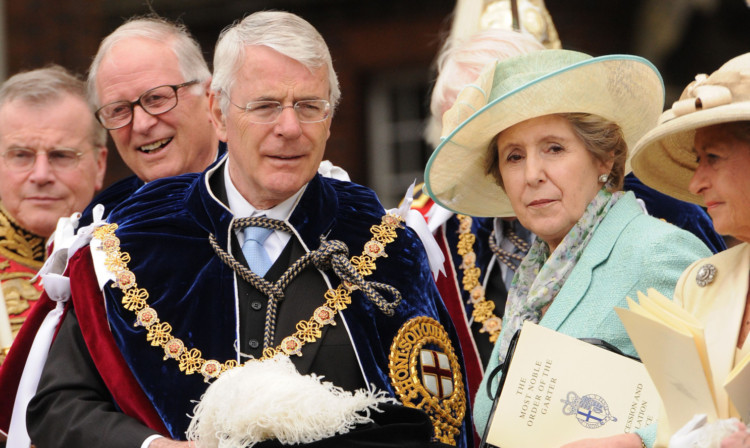
How appropriate that in the week before Halloween Westminster was visited by a ghost.
A grey man, politically dead for years, was seen in the corridors of power and, like a poltergeist, he moved the political furniture around and caused mischief.
The occasion was a lunch for political journalists. The ghostly guest was Sir John Major.
His return could be likened to Banquo at Macbeth’s feast but since this column is more familiar with the cannon of Bill Murray than Bill Shakespeare another comparison seems more appropriate.
In the opening scenes of seminal spooky film Ghostbusters, the intrepid team encounter the ghost of a gentle librarian floating in mid-air only for the vision to turn into a terrifying spectre that chases our heroes away.
Like Peter Venkman in the film David Cameron was no doubt intensely cool about the news that his Tory predecessor was in the building, but he got a fright.
Sir John was scintillating. Practically every sentence he spoke was political dynamite whether it was apologising over Hillsborough or effectively dubbing Iain Duncan Smith a dunce.
But the most newsworthy bit was his call for the Government to tackle high fuel bills with a windfall tax on greedy energy companies who’d just announced winter price hikes.
Some thought Sir John had been sent by Downing Street to test the water for the idea.
David Cameron’s performance at Prime Minister’s Questions the next day suggested otherwise.
It was more like the house of horrors than the House of Commons as the PM was pounded by Ed Miliband over energy prices.
And when Cameron announced that he was looking to roll back green taxes on power bills his deputy Nick Clegg a proponent of environmentally-friendly levies looked like he’d seen a ghost.
The announcement on green levies summed up the argument that Sir John Major had been making that this Prime Minister has veered a long way from the centre ground he so cherished and the vision that took him to the top.
Cameron took over the Tory leadership determined to bust the ghost of Margaret Thatcher that clung to the party.
If he was Peter Venkman, the socially able one in the Ghostbusters, George Osborne was awkward but enthusiastic Ray and Michael Gove was Egon, the geeky brains behind the outfit.
Theresa May might be Winston, recruited at a later date and adding some diversity.
The demon they were out to destroy was the Tories’ “nasty party” image. They showed they cared about people with gimmicks like the Big Society and the planet with slogans such as “Vote Blue to go green”.
Now Cameron is planning to trash green levies and sends out vans telling immigrants to “Go Home”.
Sir John is the last Tory to win an election as Miliband delighted in reminding Cameron last week so the current Prime Minister might do well to listen to his advice from beyond the political grave.
Instead he fled to Brussels for a European summit, only to be confronted with more spooks.
This time the spooks were of the spying kind as Cameron walked into a storm over news that America has allegedly been tapping the phones of various European leaders, including German Chancellor Angela Merkel.
The confected contretemps certainly distracted from the fact that the Euro summit achieved nothing of any use.
But Cameron, who sometimes chooses to take questions from foreign journalists on these jaunts to avoid the belligerent British press, found everyone wanted to know if he’d been bugging or been bugged.
He replied that he wouldn’t comment on intelligence matters but it’s likely the answer, consciously or not, is both.
And that leaves him, along with lots of other European leaders, asking themselves: “Who you gonna call?”

Enjoy the convenience of having The Sunday Post delivered as a digital ePaper straight to your smartphone, tablet or computer.
Subscribe for only £5.49 a month and enjoy all the benefits of the printed paper as a digital replica.
Subscribe